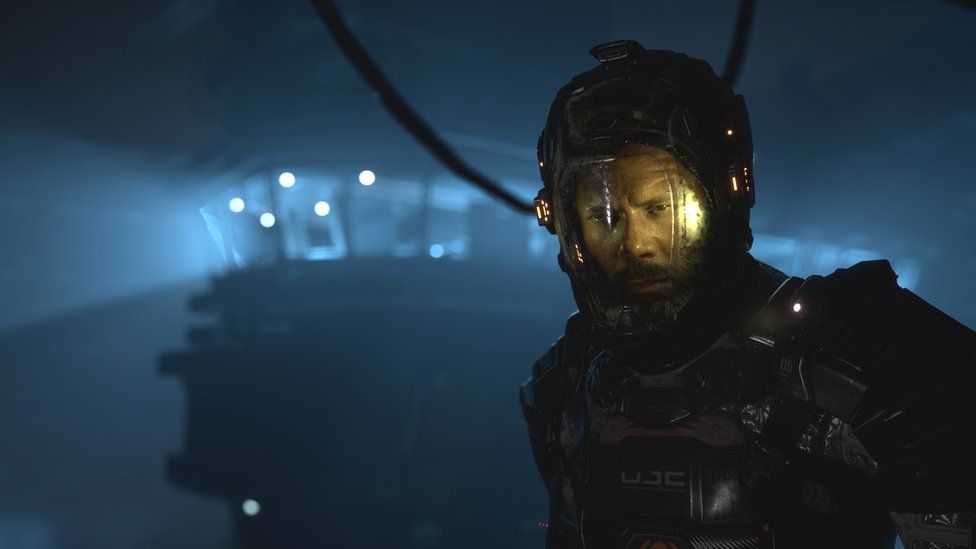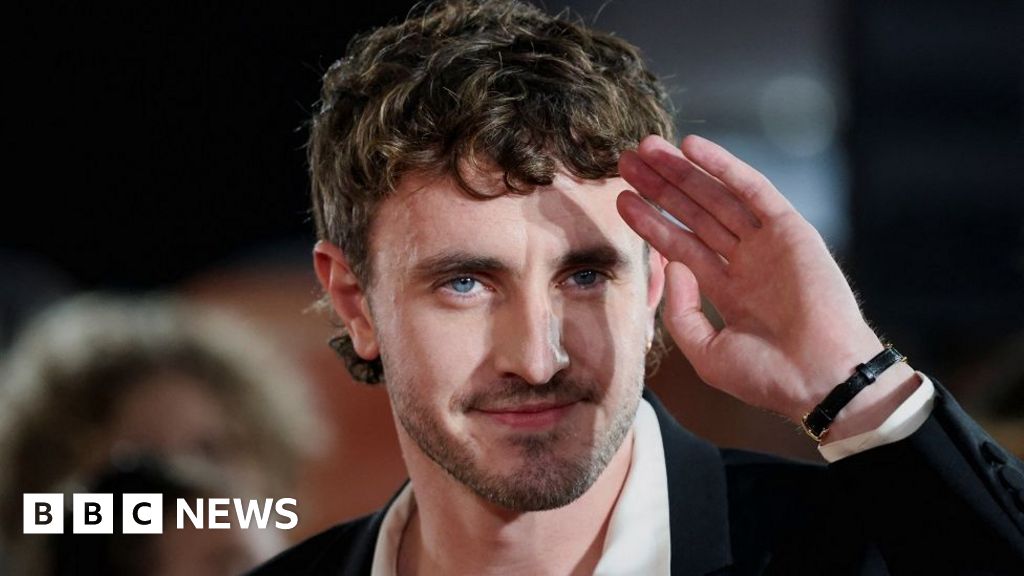ARTICLE AD BOX
 Image source, Striking Distance
Image source, Striking Distance
The Callisto Protocol's creators say its use of gruesome scenes and gore is a way of rewarding players for failing in the game
By Steffan Powell
Gaming reporter
You're walking down a dark corridor of an abandoned spaceship, there's a low growl humming in your ears. Out of nowhere, glass shatters to your left and a hideous monster is upon you - its hands clawing at your face.
Welcome to The Callisto Protocol, the latest title to attempt what many have tried to do since the early days of video gaming - scare and shock players.
New technology has allowed its creators to make one of the most gruesome gaming experiences ever seen, and they are unapologetic about it.
The game has been effectively banned in Japan because the team behind it were unwilling to alter its content in order to pass local rating regulations, which would have required scenes to be modified and toned down.
Speaking to the BBC, the game's chief creative officer Chris Stone says it is "absolutely valid" to have visceral scenes on screen, "without a doubt".
Whereas some horror experiences rely on a player's imagination to do most of the work, Stone and his team have also opted to harness the graphical power of the latest consoles to show, in intricate detail, what happens to the game's characters when they meet their untimely and bloody end. He argues that people who play horror games "inherently like the adrenaline".
"It's the same reason people skydive or bungee jump," he continues. "On the morbid side, I think it's the same reason people drive slowly past car accidents. They like to see things at a distance, it's the taboo of it, that people want to be a part of."
Image source, STRIKING DISTANCE
Image caption,The Callisto Protocol has been made by many of the team responsible for the Dead Space gaming series
For Louise Blaine, horror expert and presenter of BBC Radio 3's Sound of Gaming, "there's a real delight in being shocked by gore" if it's "justified" within the story that's being told.
The Callisto Protocol is the latest in a long line of titles, like Resident Evil and Silent Hill, that have used fear and plenty of blood to entertain audiences.
"Gaming is now able to tell smarter and smarter stories, they can splatter us with as much blood and guts as they like to get the job done," Blaine explains.
"Feeling a moment of horror, and then laughing at the feeling it gave you, is a vital part of the horror experience. We need to go through something, otherwise what's the point?"
Like film and television before it, gaming has occasionally upset some who feel that it's unnecessary to display graphic content on screen.
Gaming has largely moved-on from those conversations, just as its film and television counterparts have. But titles like this are an opportunity for some to raise eyebrows again and question their validity.
Blaine thinks it's frustrating the horror genre can be treated in this way. "This debate raises its ugly head every time someone dares to do something a little different or pushes something in a new direction," she suggests.
"As long as The Callisto Protocol can justify its gore, whether that's for comedy horror, I-can't-believe-it-did-that outrage, or something darker, I think drenching us in monstrous alien blood can only be a good thing.
"And the truth is, if you don't like horror games, no-one is making you play. As long as it's labelled for the right audiences, they should be able to watch and experience whatever they want."
The Callisto Protocol is an 18 rated game in Europe.
Image source, STRIKING DISTANCE
Image caption,Karen Fukuhara argues that experiencing frightening and jumpy situations from the comfort of home is what draws people into the horror genre
There's a fundamental difference between horror games and their film or television brethren.
In games, the player is in control of the story and has responsibility for creating the outcome. The player isn't passive, they actively choose to open a suspicious looking door or to walk down a creepy corridor, making the experience arguably more personal and the scares more intense.
Stone says their overt use of guts and gore is designed to reward people for the deaths in their game. "The player's imagination is always going to build tension, and there's plenty of that in our game, but these death scenes validate that imagination," he says.
Dying is integral to the mechanics of many video games, whether it's being shot in Call of Duty or Mario failing to jump onto a platform. Death in gaming is often an event to learn from and avoiding it in the game a challenge to overcome.
Stone argues, even though it may be "morbid" to say, the game's most gruesome moments are "almost a reward for dying in the game and losing progress".
"There are plenty of games where you die over and over again in the same way, you get so tired of it that you put the controller down.
"That's not what we want," he adds, "we want the player to find it painfully rewarding - so they want to do it again and see what happens next so we go through a lot of effort in terms of crafting all these horror moments."
Actress Karen Fukuhara plays Dani Nakamura, a central character who's busy leading a resistance group at Black Iron Prison. She's used to performing in projects with plenty of blood and guts on display, as one of the main characters in Amazon Prime show The Boys. She thinks horror experiences are popular because "people love to lose control" especially if "they're in a comfortable environment".
Image source, STRIKING DISTANCE
Image caption,Call of Duty's Josh Duhamel plays Jacob Lee in Callisto Protocol
"There's a spontaneity that comes with horror, because there are these jump scares and tension building - especially in our game because it it's so brutal. Obviously these aren't things that you encounter in everyday life. Being able to do that in a game, and have that kind of experience within yourself in a safe place, is what draws people into the genre.
"I love doing projects like this, which is funny because whenever I watch other shows with this much gore I'm just such a scardey-cat! I always say 'oh no why would they show that?!'. But whenever I watch my own projects, or am actually doing the scenes, I feel like a sort of comfort. It's just fun to be on set to work on these crazy scenes that make people uncomfortable watching."
The Callisto Protocol has been made by some of the brains behind the Dead Space franchise and is seen as its spiritual successor.
Whether your a horror fan or not, it is not for the faint-hearted.
For more gaming content - go to Press X to Continue - the BBC Sounds gaming Podcast.

 1 year ago
26
1 year ago
26








 English (US)
English (US)